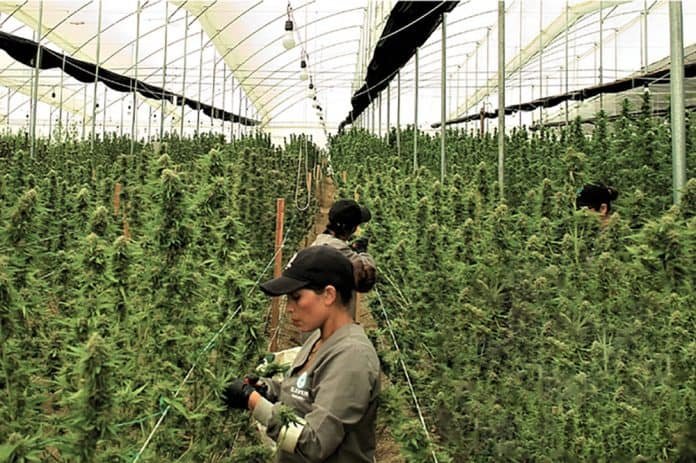5 Reasons Why Vertical Integration Is The Best Path To Success
When cannabis companies start out, there are a hundred decisions to be made. These can range from the mundane to the vitally important, such as the way the organizations will be structured as corporations or whether they will raise capital by debt or equity financing. One of the key early business decisions is whether or not to run a vertically-integrated cannabis operation.
What does this mean exactly? A vertical cannabis operation is one in which the company controls all points of the supply chain–growing the plant, harvesting it, processing and distributing the product, and then selling it from a company-branded store. Outside of cannabis, consumers are familiar with this kind of vertical branding through companies such as Apple and Target.
In the legal cannabis space, vertical operations are common, but the legalities around them are as varied as the markets being served. Some states leave it up to the cannabis companies to decide if they want to be vertical operations. Other states mandate vertical cannabis structures for both adult-use and medical cannabis companies. And some states require it for medical cannabis but not adult-use. Meanwhile, states such as Louisiana and Washington even go as far as to prohibit different forms of vertical operations, citing fears over business monopolies developing in their markets.
Aside from all these legal and regulatory variables affecting vertical cannabis business structures, they really can be greatly beneficial for the companies that can take advantage of them. Here are five reasons why:
1. You get your product on the shelves.
This sounds simple enough. You can’t have sales if you don’t get your product out there. But it’s not always easy to pull off in today’s cannabis industry. For all its profitability and breathless media coverage, the nascent industry doesn’t have a mature supply chain in place, nor does it have big-box retail outlets of which to take advantage, either. So how does a cannabis company put its product on the shelf and in front of consumers for the best revenue potential? Simple. It has to own the shelf.
2. You can better protect prices.
A good number of retailers also are focused on selling their own cannabis products. That means a lot of independent growers are finding it that much harder to sell their product. This, of course, results in price erosion, and independent operators are at a disadvantage when they can’t get their products in front of consumers easily or affordably. A vertical framework can help these independent businesses overcome this.
3. You can better protect your customers.
One of the strongest selling points on a vertically integrated system is that its control over all aspects of the supply chain enhances both product quality and safety. The deadly vaping epidemic of 2019 is a good example of how a lack of control over various aspects of the supply chain led to scores of deaths and thousands hospitalized. The chemical exposure victims faced would not have happened in a closed system in which companies controlled all the product ingredients and how they are administered. Instead, illicit-market marijuana vaping products were contaminated with the additive vitamin E acetate.
4. You can protect your company from market disruptors.
Today’s COVID-19 pandemic illustrates perfectly how markets of any kind can be affected by disruptions, some of which might have seemed inconceivable at the start of the year. Across practically all markets, the importance of strong supply chains has been evident during the pandemic, and it was something particularly crucial to keeping so-called “essential” businesses like cannabis up and running. The companies with vertical operations had and continue to have better control over their supplies. This kind of supply-chain integrity also can be vital during other more-mundane yet equally devastating disruptions, too, such as seasonal hurricanes, droughts or wildfires.
5. Consumers often more readily trust vertical brands.
In the wake of the deadly vape crisis and during the ongoing and even more deadly novel coronavirus pandemic, many cannabis consumers have become more discerning in regards to product safety, something promoted by vertically integrated companies controlling all points of their supply chains. Additionally, there are more medical-use states in the nation than adult-use ones. Most states allow vertical integration on the medical side and many require it. As these states eventually legalize adult-use cannabis in the fairly near future, consumers there will already be predisposed to trusting the vertical model of “seed-to-sale” cannabis of which they’re already familiar.
Like any business model, the vertical one for cannabis companies has both pros and cons depending on unique circumstances. And the typically higher cost to implement a vertical operation is one of the main reasons companies might not choose to embrace it.
All things considered, though, vertical integration offers a lot of upside for cannabis companies. And that should make it an easier decision for new companies to make as they launch.
by Joe Caltabiano


